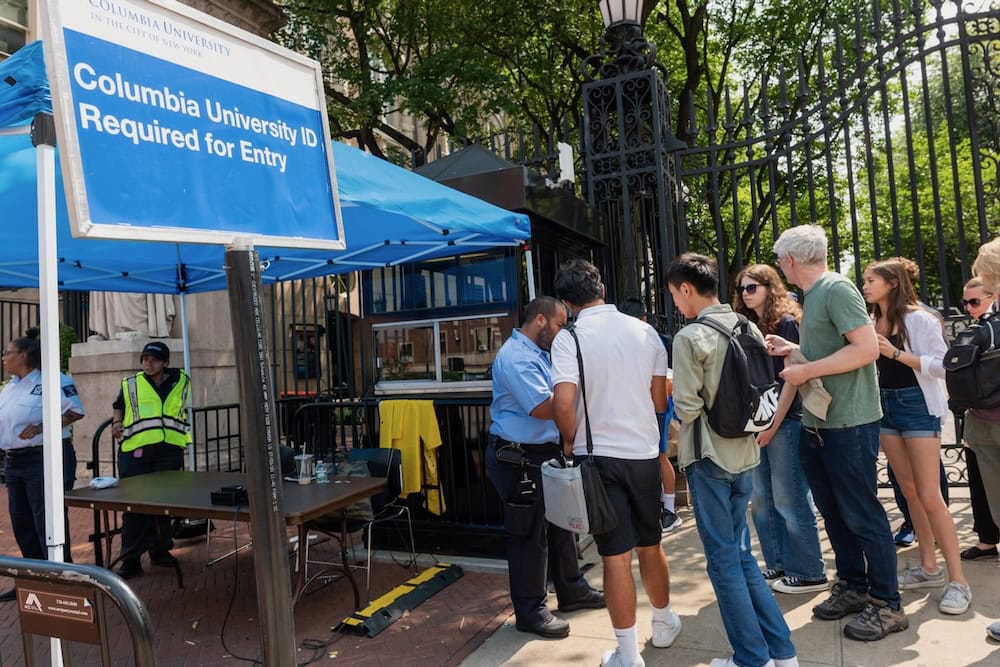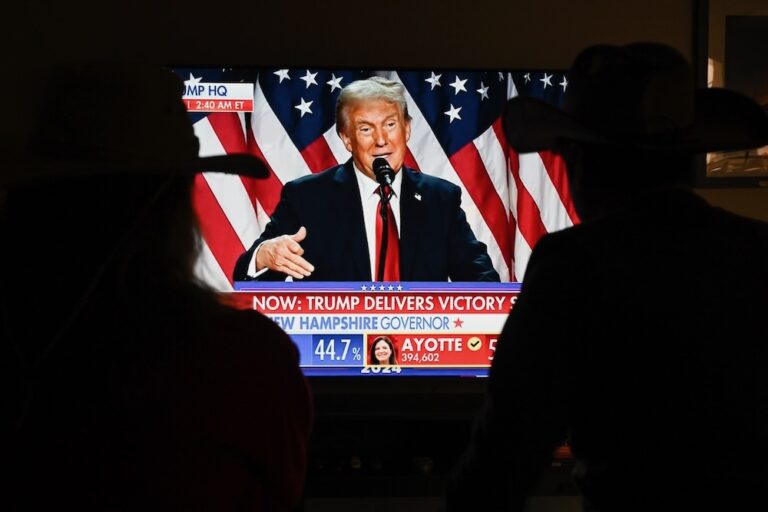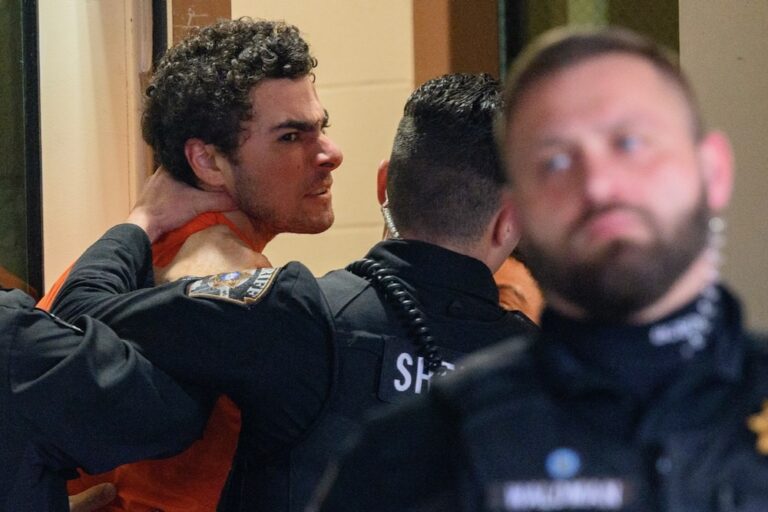“All too often, universities have appeared to be enacting double standards, clamping down on pro-Palestinian speech more than speech on other issues.”
This statement was originally published on pen.org on 28 August 2024.
As students return to campus this fall, it’s a good bet that protest encampments will arrive with them — if universities don’t ban them first.
University administrators are preparing for a fraught back-to-school season following a spring of protests unlike anything seen in a generation. More than 200 campuses in at least 20 countries and 45 states had protests and Gaza solidarity encampments last spring after students at Columbia University first pitched their tents in April.
Police were called in to multiple campuses, and administrators came under fire both for aggressive responses and for allowing antisemitism and anti-Muslim bias to spread unchecked. PEN America expressed deep concern about universities’ responses and the use of excessive force against student protesters.
As students plan a new round of protests, universities have been preparing – in many cases by changing their policies to restrict tents, require student IDs on campus, or restrict the hours for protests.
While campuses may benefit from reviewing and clarifying their guidelines, they should ensure they’re doing it for the right reason, and not as a knee-jerk reaction to a particularly contentious moment or in response to expression of a particular viewpoint. Kristen Shahverdian, program director of campus free speech at PEN America, said the key with updating policies is to make sure that the changes do not end up curtailing free expression.
“Universities have a difficult task this fall. They have an obligation to protect their students’ free speech rights and promote open dialogue, recognizing that student protests are a long-standing feature of campus life, while also ensuring that protests do not disrupt core university functions, like classes or speaking engagements,” Shahverdian said. “They need to make sure that addressing concerns about hate and harassment does not veer into censorship, and that their policies maintain the space even for contentious disagreement and protest. All too often, universities have appeared to be enacting double standards, clamping down on pro-Palestinian speech more than speech on other issues.”
“All too often, universities have appeared to be enacting double standards, clamping down on pro-Palestinian speech more than speech on other issues.”
In the heat of contention on campuses last year, some universities suddenly changed their policies for assembly or events organized by faculty or students, leaving campus stakeholders confused, critical, or feeling silenced.
Over the summer, multiple schools continued the trend, announcing changes in protest policies. The University of Pennsylvania, where an encampment was broken up by police, announced new temporary guidelines that banned encampments on campus. Indiana University banned camping that’s not part of a university event, and the University of Central Florida added specific language to reinforce a ban on overnight events and tents. The University of California system banned encampments and the use of masks to “conceal identity.”
Over the last three years, PEN America has spoken with hundreds of academic leaders and faculty across the country about how to reconcile what can feel like competing demands on campus leaders to preserve free expression for all. In the Campus for All workshops Shahverdian leads, she equips administrators, faculty, and staff with tools to respond to a range of scenarios.
As she explains, universities are within their rights to impose reasonable restrictions on the time, place, and manner of protests – for example, preventing a student from using a bullhorn on the quad at 11 p.m. or from protesting inside a building while classes are being held. These policies safeguard students’ rights to access their education, ensuring they are able to go to class and to receive an education free of a hostile environment.
And yet, universities must tolerate some level of disturbance and discomfort. The objective of protests frequently is to disrupt. If restrictions go too far, they could infringe upon students’ right to protest. Students being forced to walk near a peaceful protest – even if they find it offensive – shouldn’t be cause to shut it down.
Shahverdian said that universities should think about who is included in the process when they review their policies, and convene a diverse group of faculty, staff, and students to provide input. They also must consider how the campus community will be educated about the changes.
Shahverdian advises campuses to protect the space for peaceful protest; even protests that may not adhere precisely to the letter of campus policies can be permitted for a time so long as they are nonviolent and not infringing on other students’ ability to learn. At the same time, campuses must be clear when, where and how rules have been broken, and violence should never be tolerated.
Administrators can engage with protesters while allowing their voices to be heard, and speak to the campus about the impact protests are having on others. She said, “it’s important to remember that peaceful does not mean there aren’t signs that people find offensive. There can be 100 signs that say ‘from the river to the sea’ and lots of people can be offended, but that is still considered peaceful and still legally protected speech. But administrators have also been accused of failing to respond to student concerns about antisemitism on campus and as part of some protests, and so they must do all they can to create an environment where students feel supported to express a range of views.”
Administrators should take steps to address rising antisemitism and anti-Arab or anti-Muslim speech, including by unequivocally condemning it when it arises and offering support services for those impacted as well as educational resources for the entire student body regarding relevant history and context. “Students need more opportunities to learn, discuss, and debate about this,” says Shahverdian. “After all, that’s the purpose of college education and what it can do well.”
“Students need more opportunities to learn, discuss, and debate about this. After all, that’s the purpose of college education and what it can do well.”
Education and engagement should be at the forefront of a university’s response. If a school has a policy against tents — pre-existing or just now put into place — Shahverdian advises having a grace period to let students know. And if student protesters do use tents in a restricted area or otherwise violate the rules — say, banging drums outside a room where students are taking a test — she advises administrators to engage in dialogue first. “Find out what they want. Would they be willing to protest without the tents? Explain the reasons for the policy. Engaging in dialogue increases the opportunities to find a solution that respects everyone’s rights.”
If students knowingly violate the rules anyway, “I would hope they are doing it in the spirit of civil disobedience with full understanding and acceptance that there may be consequences,” Shahverdian said.
Understanding how and whether police will be used is an essential point for campus leaders to consider, Shahverdian said. How will protesters be notified if they are breaking a policy, and how will they understand the consequences?
“Colleges and universities should not call police on their students for peaceful protests,” Shahverdian said, adding that administrators should always work with campus police first, who should be trained to respond to acts of civil disobedience appropriately. “There is a degree of judgment here when time, place, and manner policies are being broken. Too often in the spring, campuses were quick to call in external police — even State Troopers, in Texas — and quick to punish. They should lean into the fact that they are educational environments when they are making these decisions.”
“Colleges and universities should not call police on their students for peaceful protests.”
Protests in the spring led to more than 3,100 arrests across the country, though many charges were dropped. The timing of arrests before graduation resulted in degrees being withheld, and some disciplinary hearings will stretch into the fall and could still result in suspension, expulsion, and even deportation.
At the same time, campus leaders are facing political pressure to clamp down. The presidents of Harvard and the University of Pennsylvania were forced to resign after their grilling by Congress, and the president of Columbia University recently announced that she would step down, too. Legislators across the country have introduced bills that threaten free speech protections on campus in the name of fighting antisemitism, the latest being a directive to comb through syllabi of some faculty in Florida. Meanwhile, several universities face lawsuits from Jewish students who say universities failed to protect them from antisemitism, while others face suits from pro-Palestinian students who claim their rights were violated in crackdowns on protests; and the Department of Education is investigating complaints of both antisemitism and Islamophobia on campuses.
Despite the challenges and complexities involved, campus leaders must resist letting political pressure drive their decisions about what is best for their students and their campus, Shahverdian emphasized. Shahverdian advises campus leaders to run through scenarios and rehearse what they will do if various disruptions or policy violations happen, to ensure that their response is thoughtful, even-handed, and does not target any particular viewpoint.
“You can’t prepare for everything,” she said, “but preparation can help tremendously during tense moments.”
- PEN America’s Campus Free Speech Guide provides guidelines for peaceful protest on campus.
- Find out about Campus For All workshops for academic leaders, faculty, and staff.



